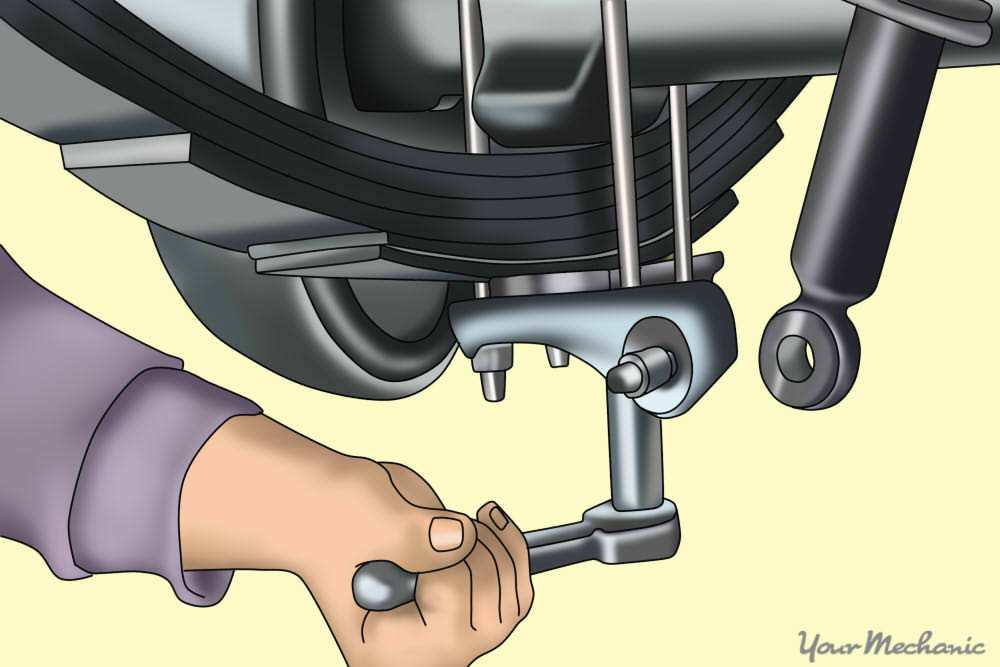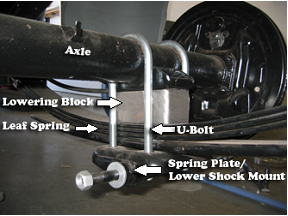Are you eager to give your leaf spring truck a sleek, lowered look? Whether you’re aiming for improved handling, a more aggressive stance, or just a fresh aesthetic, lowering your truck can be an exciting project.
But before you grab your tools and start wrenching, it’s important to know the right techniques to ensure a safe and successful modification. Imagine cruising down the road, turning heads with your truck’s new profile. It’s not just about looks; it’s about creating a driving experience that’s uniquely yours.
Let’s delve into the essential steps and expert tips that will guide you to achieving the perfect lowered stance for your leaf spring truck.

Credit: leafsprings198.com
Understanding Leaf Spring Suspension
Leaf springs have multiple parts. They include the spring itself, shackles, and bushings. The spring is a long, curved metal strip. It supports the truck’s weight. Shackles are small links. They connect the spring to the truck frame. Bushings are small, round pieces. They help reduce noise and friction.
Each part works together. They create a strong support system. This system helps the truck carry heavy loads. It also helps with a smooth ride. Good leaf springs can last for many years. But they need care and checks.
Trucks depend on these components. They keep the truck balanced. They also make sure the ride is safe. Without them, the truck might not drive smoothly.
Benefits Of Lowering A Leaf Spring Truck
Lowering a truck can make it look sleek. Sleek vehicles often grab more attention. A lowered truck has a sporty feel. It looks different from regular trucks. This can make it stand out. People notice things that look unique. A lowered truck can be a style statement.
A lower truck can handle turns better. Better handling means more control. Control is key for safe driving. With lower springs, the truck is closer to the ground. This helps in reducing sway during turns. Drivers feel more confident. A stable truck is easier to drive.
Preparation For Lowering
You will need a set of basic tools. A wrench set is essential. You also need a jack and jack stands. These help lift the truck safely. A socket set is also useful. Keep safety glasses and gloves handy. They keep your eyes and hands safe.
Safety is very important. Always use a jack stand. Never rely on a jack alone. Wear gloves to protect your hands. Safety glasses shield your eyes from dust. Keep your work area clean and dry. This prevents slipping and falling. Check your tools before use. Make sure they are in good condition.

Credit: www.yourmechanic.com
Step-by-step Lowering Process
First, park the truck on a flat surface. Use a jack to lift the truck. Secure with jack stands. Remove the wheels carefully. Unbolt the leaf springs using a wrench. Keep all bolts and nuts safe. Lower the leaf springs gently. Ensure you do not damage any parts.
Position the lowering blocks between the axle and leaf springs. Align them properly. Use the U-bolts to secure the blocks. Tighten the bolts firmly. Ensure everything is tight and aligned. This step is crucial for safety.
Check the shock absorbers. They might need adjusting after lowering. Loosen the shock bolts. Adjust the height as needed. Tighten the bolts securely. Test the truck by bouncing it. Ensure the shocks are not too stiff.
Common Mistakes To Avoid
Mistakes during block installation can cause big problems. Blocks must be the right size and shape. Use blocks made for your truck type. They must fit well. Loose blocks can move and damage other parts. Tight blocks can break when driving. Check the blocks often. Secure them properly. This prevents accidents. Always follow the instructions. Using the wrong tools can also cause trouble. Be careful and take your time. Double-check everything before finishing.
Alignment keeps your truck safe and smooth. Ignoring alignment can wear tires fast. It can make driving unsafe. Alignment affects handling. Poor alignment can cause drift. Steering becomes harder. Check alignment after lowering your truck. Use a professional if needed. Regular checks help avoid problems. This keeps your truck in good shape. Proper alignment saves money and effort in the long run.
Maintenance After Lowering
Regular checks keep your truck safe and sound. Inspect bolts and nuts often. They can loosen over time. Check for rust on the leaf springs. Rust weakens the springs. Clean it off if you see any. Look at the tires. Worn tires can be dangerous. They need to be in good shape. Listen for noises. Strange sounds can mean trouble. Fix them soon.
Proper alignment helps tires last longer. It also improves handling. Misalignment can cause steering problems. Visit a professional for alignment checks. They have the right tools. Aligning the wheels keeps your ride smooth. Keep an eye on the steering. If it pulls to one side, check alignment. A well-aligned truck is safer and more fun to drive.
Expert Tips For Optimal Results
Using the right blocks is key for lowering your truck. Blocks come in different sizes and materials. Choose blocks that fit your truck’s model and needs. Metal blocks are strong and last long. Plastic blocks are lighter but may wear out fast. Measure your truck’s height before buying. This ensures the blocks fit well. Wrong blocks can cause problems. Safety is important. Always check the blocks for damage or wear. Replace if needed.
Sometimes, it’s best to ask a professional for help. They know how to lower trucks safely. They have the right tools. This makes the job easier and quicker. Professionals can guide you on the best blocks to use. They ensure your truck is safe after lowering. This avoids future problems. Consulting saves time and effort. Always choose a trusted expert. Ask friends for recommendations.

Credit: www.andysautosport.com
Conclusion
Lowering a leaf spring truck can be a rewarding project. It enhances the truck’s look and ride. Follow the steps carefully for best results. Safety should be your priority during the process. Double-check each adjustment and installation. Enjoy the improved performance and style of your truck.
Share your experience with fellow truck enthusiasts. They might appreciate your insights and tips. Always consider professional advice if unsure. Your truck’s transformation can be unique and personal. Happy customizing and safe driving!
